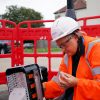SSE Enterprise Telecoms Win £10.5m Aberdeenshire Full Fibre Project

The Aberdeenshire Council in Scotland has awarded a £10.5 million UK Local Full Fibre Networks (LFFN) contract to the Enterprise Telecoms division of SSE (SSEET), which will be tasked with building a new “gigabit-capable” Dark Fibre network to connect 189 local public sector sites (hospitals, council buildings, schools etc.).
Spanning up to 200km, the new “full fibre” network is expected to take 18 months to complete and will form part of the wider Aberdeen City Region Deal (ACRD). “It is part of a funding allocation designed to improve the region’s digital infrastructure, key to the long-term future of the local economy,” said the operator.
SSEET expects to use both their existing UK fibre network to help support the work and they’ll also be working to harness Openreach’s (BT) existing cable ducts, which will enable them to extend via the Physical Infrastructure Access (PIA) product.
Advertisement
On top of all this SSEET plans to “further invest” in the infrastructure in order to offer both data capacity (backhaul) and services to mobile network operators and broadband ISPs, which they say “will increase service availability and speeds for residents and businesses in Aberdeenshire.”
Martin Samuel, Public Sector Director at SSEET, said:
“Improving the region’s digital infrastructure is key to the long-term sustainable future of the local economy. This collaborative partnership is about maximising Aberdeenshire Council’s resources and providing the best value for money possible.
Our shareholder SSE plc’s employer ranking of first in Scottish Business Insider’s Top500 Index 2019 means we are committed to supporting Scotland’s economic growth for the long-term. In greenlighting this initiative, Aberdeenshire Council is investing for success, not just for now, but for the next 25 years. This access to full fibre connectivity will help to reduce inequalities and level the playing field for economic, environmental and social progress for Aberdeen and surrounding areas.
Until now, many local residents and businesses have relied solely on the incumbent to meet their connectivity needs. We’re delighted that this new, gigabit-capable network will offer another option in the region, benefitting the community for years to come.”
Jim Gifford, Leader of Aberdeenshire Council, said:
“The digital elements of our City Region Deal are among the most important, in terms of helping businesses and communities see a demonstrable change thanks to the Deal. The ACRD remains about being progressive, delivering tangible benefits and laying out a road map for the future to ensure the ongoing stability of our region. We can all agree that in the current circumstances that is almost more important than ever.
My thanks to the teams who have worked in partnership with SSE Enterprise Telecoms, the NHS and the other Deal partners to sign and agree this important milestone. I look forward to seeing the benefits being delivered for both the public sector and those companies or communities who access this network.”
Aberdeenshire residents will apparently benefit from “limited disruption” with SSEET using 43km of its existing Dark Fibre to reduce the amount of construction during implementation. This will then be supplemented with 130km of new fibre that will be created to maximise the number of premises served for the budget.
This optimum use of existing and new fibre pathways allows the operator to reach more locations than a conventional construction project, reducing the total construction requirement by around 80%, which is of course also helped by the use of PIA mentioned earlier. Assuming all goes well then in the future commercial investment could harness all this to help bring 1Gbps FTTH broadband to more homes.
Mark is a professional technology writer, IT consultant and computer engineer from Dorset (England), he also founded ISPreview in 1999 and enjoys analysing the latest telecoms and broadband developments. Find me on X (Twitter), Mastodon, Facebook, BlueSky, Threads.net and Linkedin.
« COVID-19 – Three UK Reveals Impact of Crisis on Network Traffic
Vodafone UK Extend NHS Unlimited Data Offer to Care Workers »























































It would be interesting to know if their plan includes provision to connect every single primary school in Aberdeenshire. We have a school in our village and the nearest fibre node is 5km away with no duct space left between it and us which has been one of the reasons BDUK never reached us. Maybe if there is a confirmed plan to fibre up the local primary school, one way or another that could lead to fibre finally reaching the rest of us.